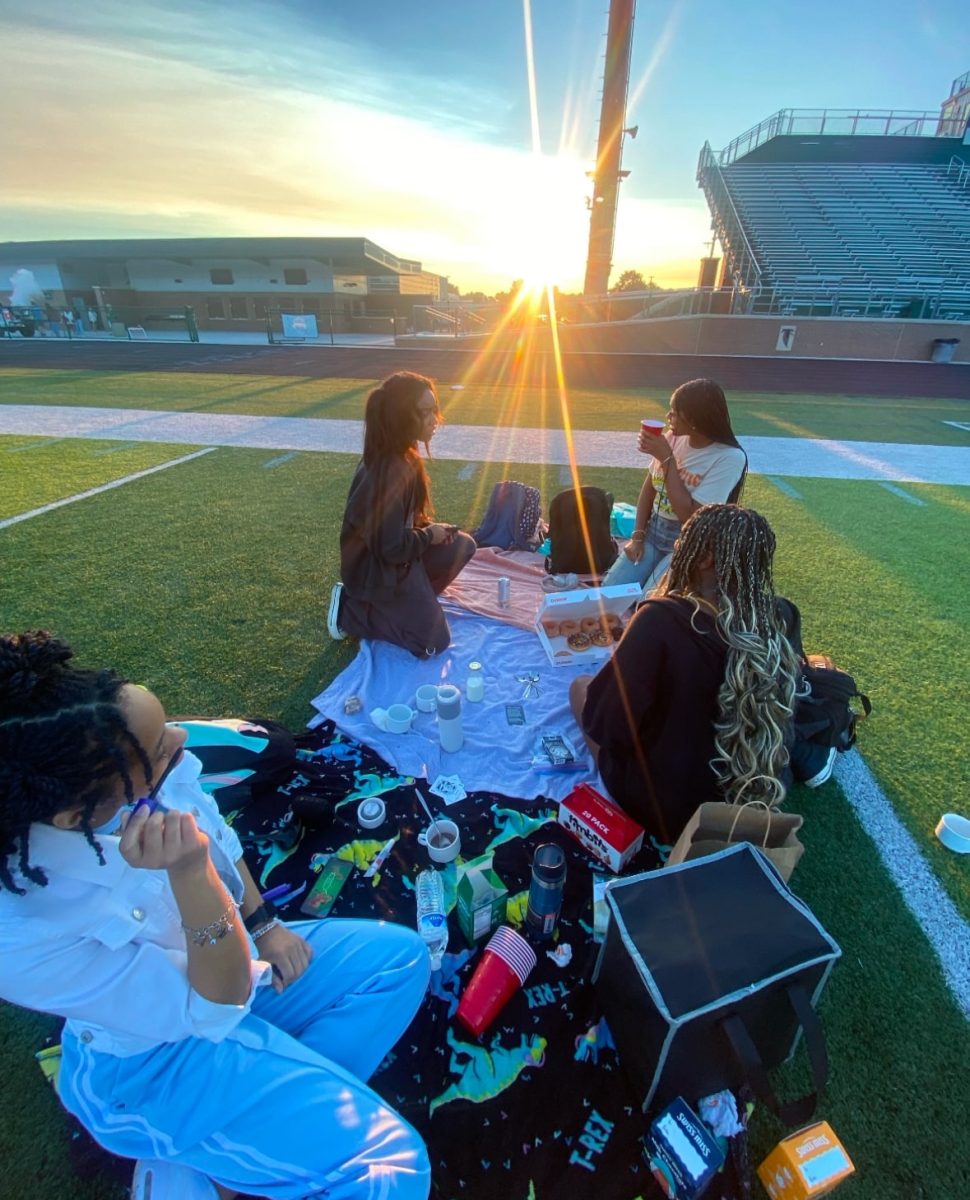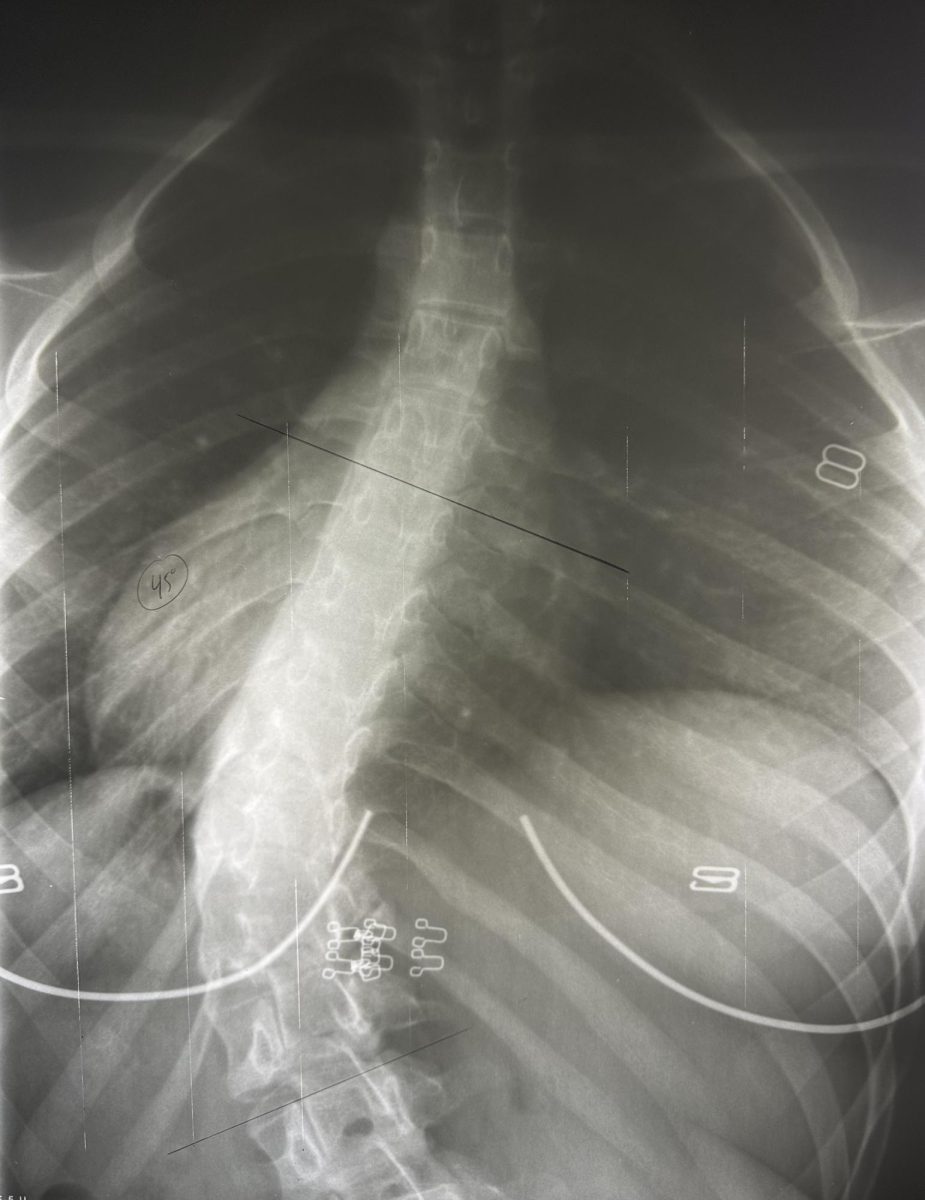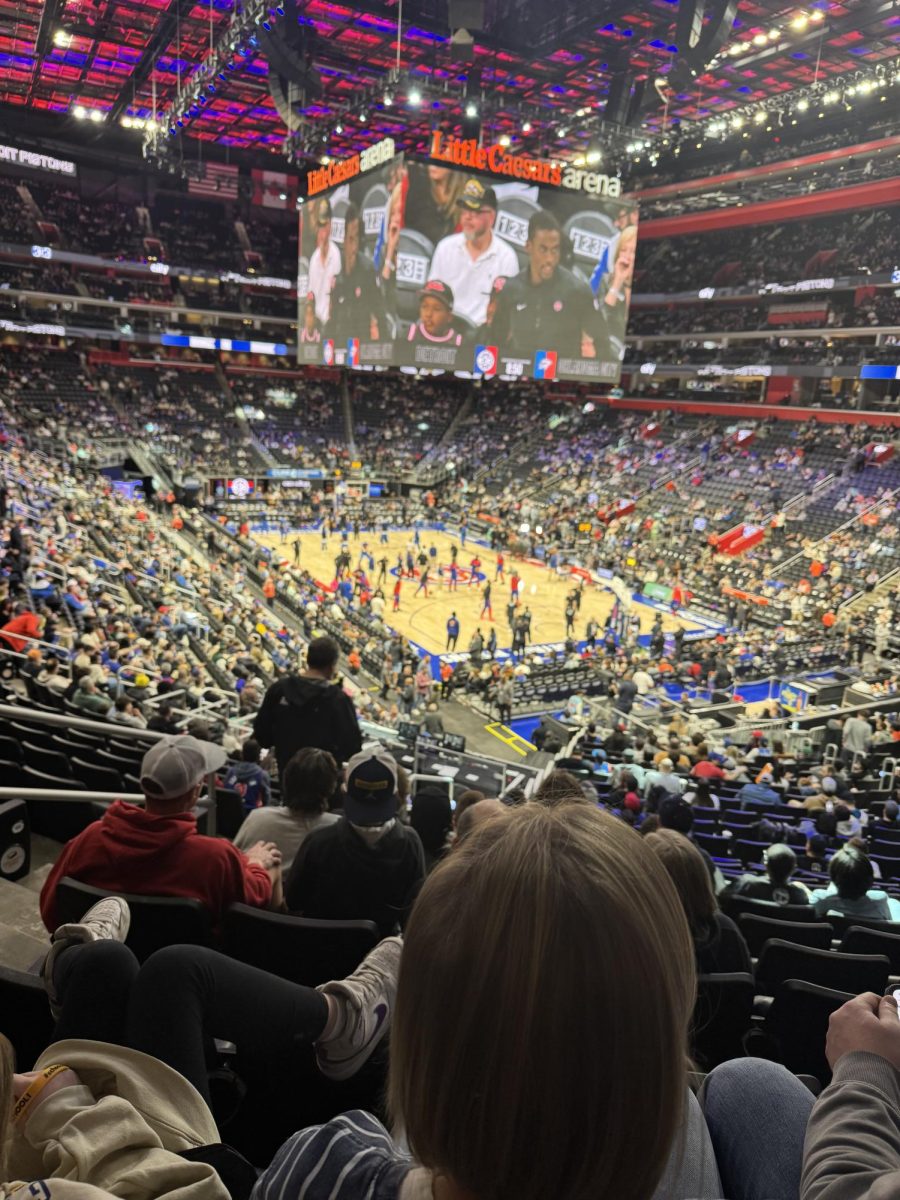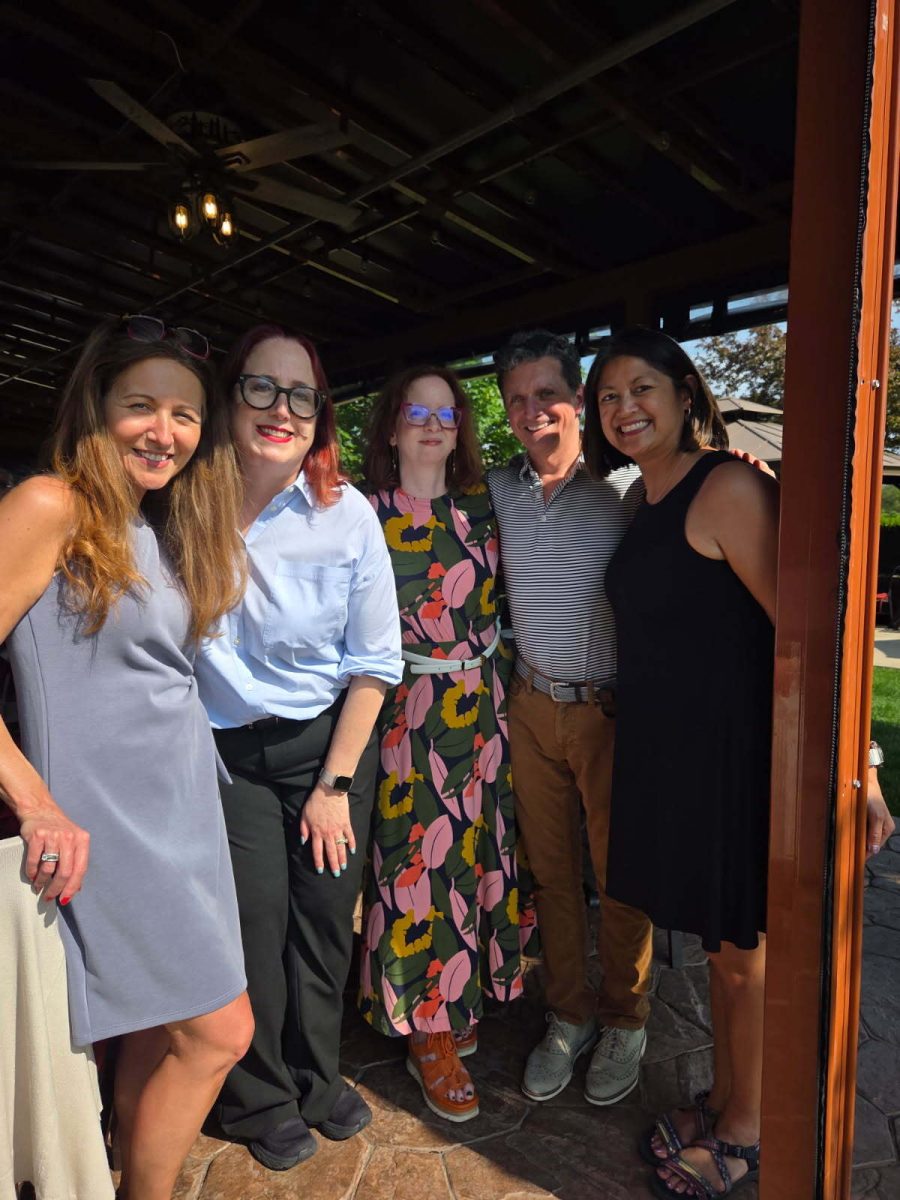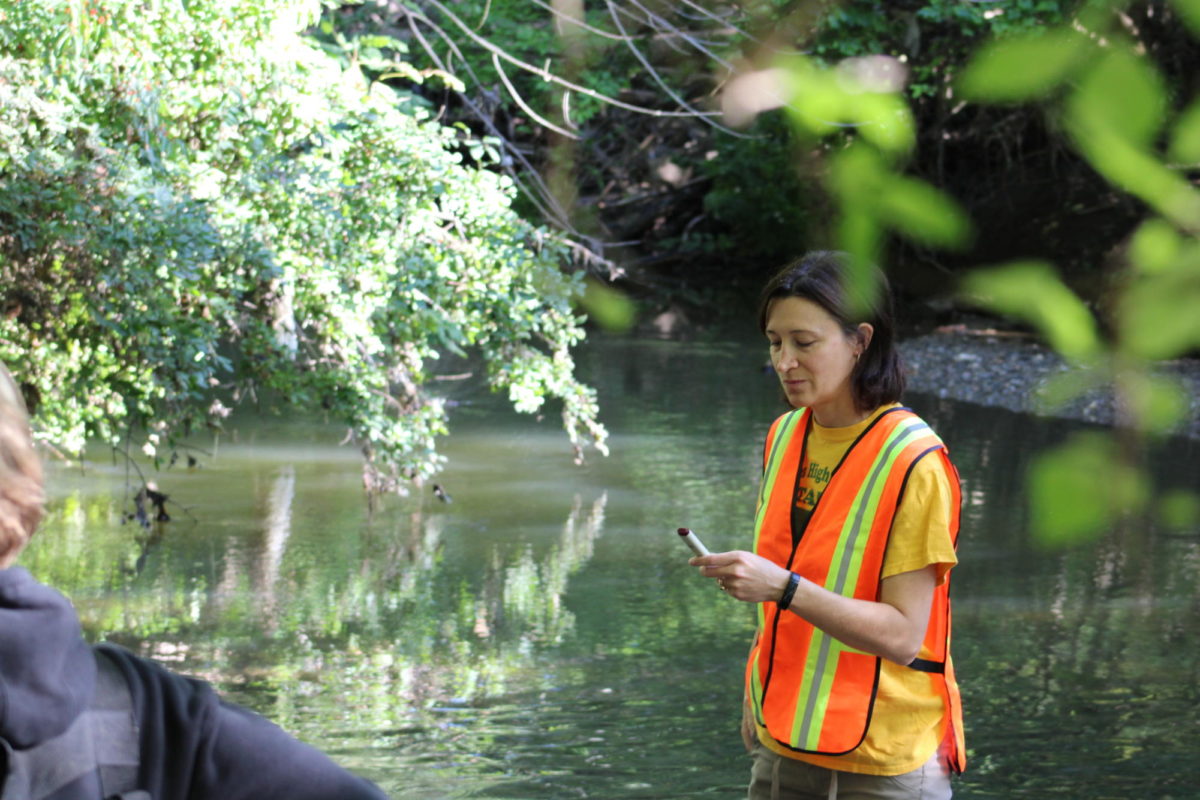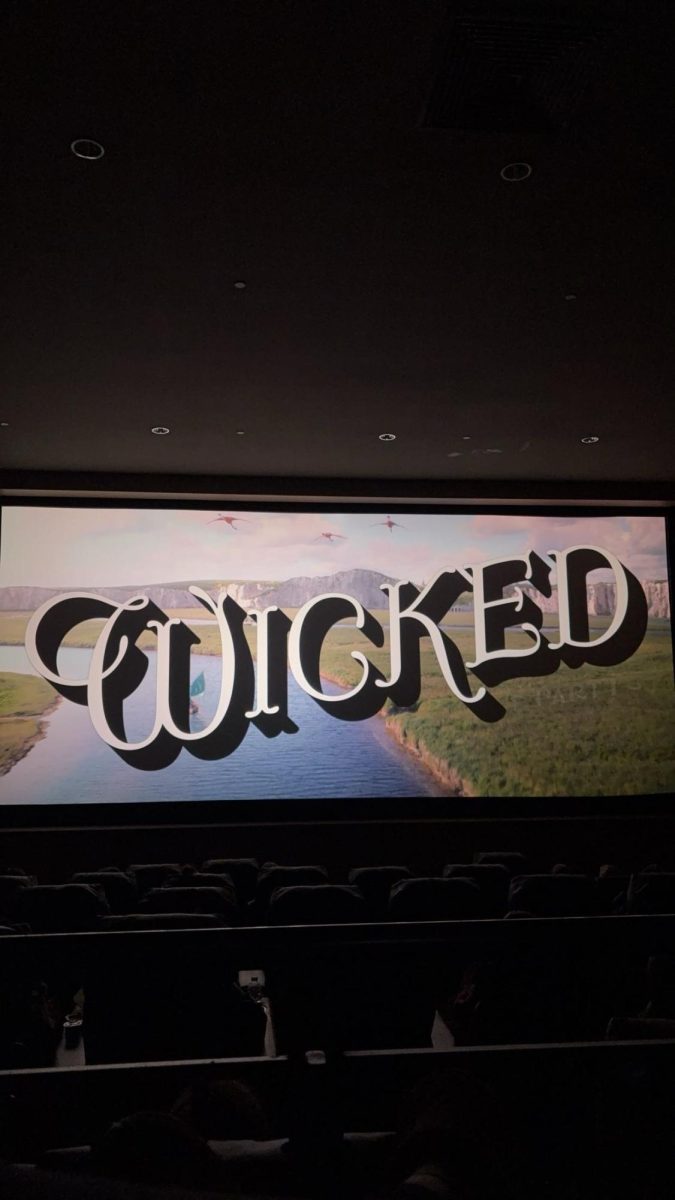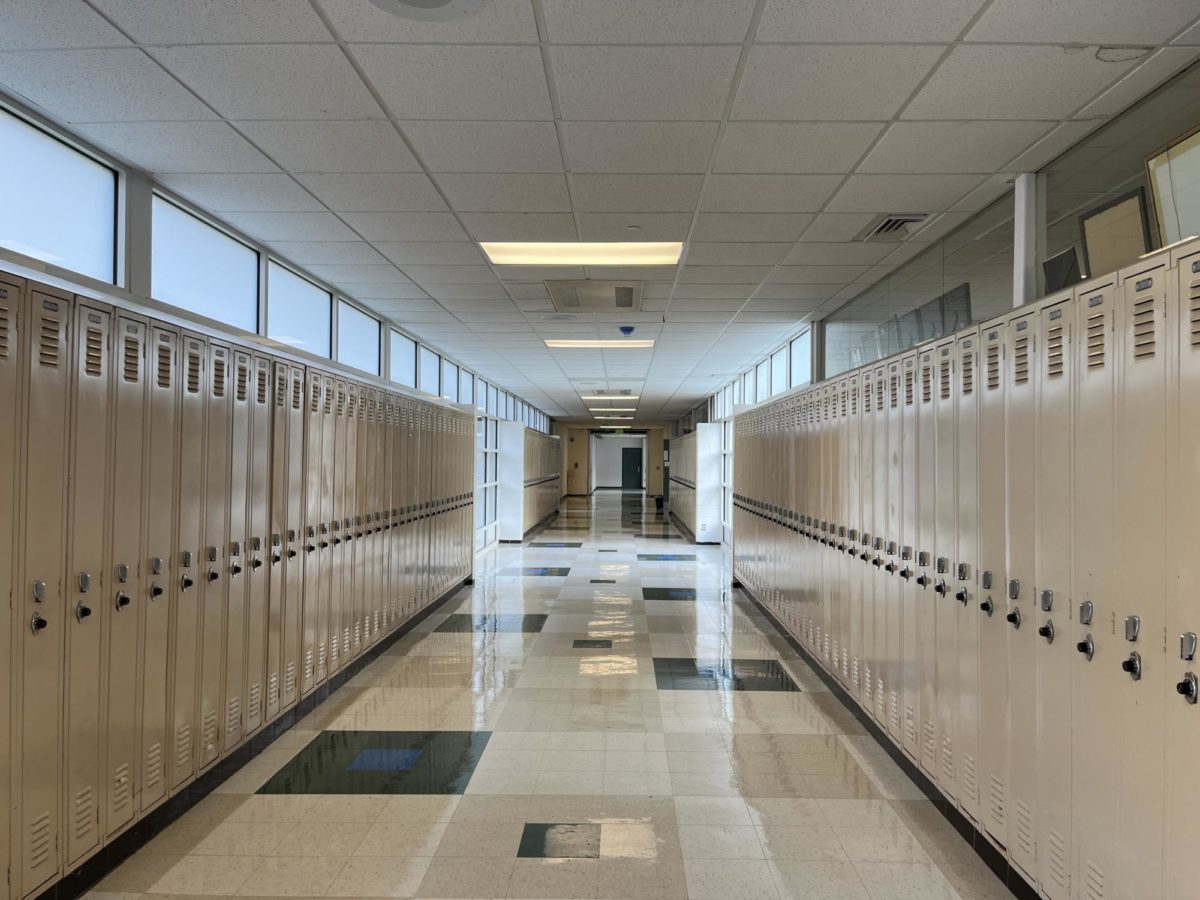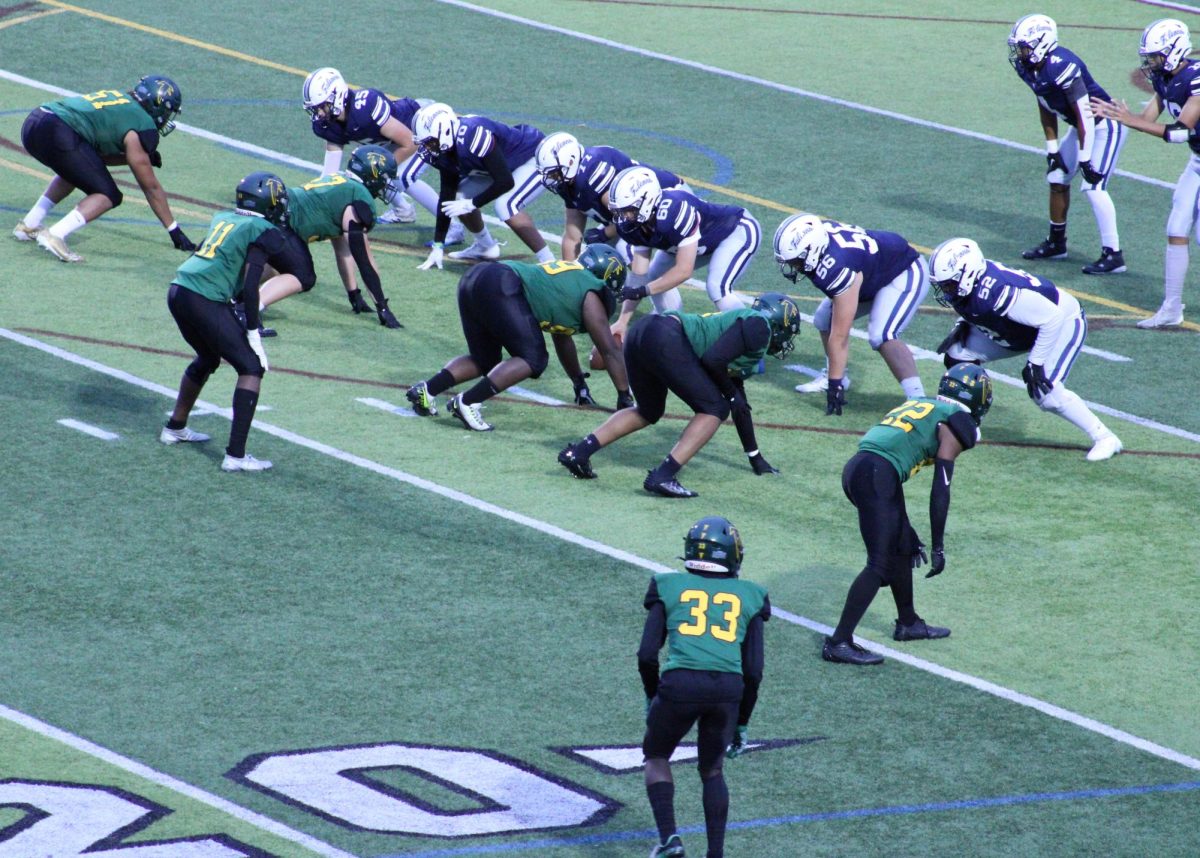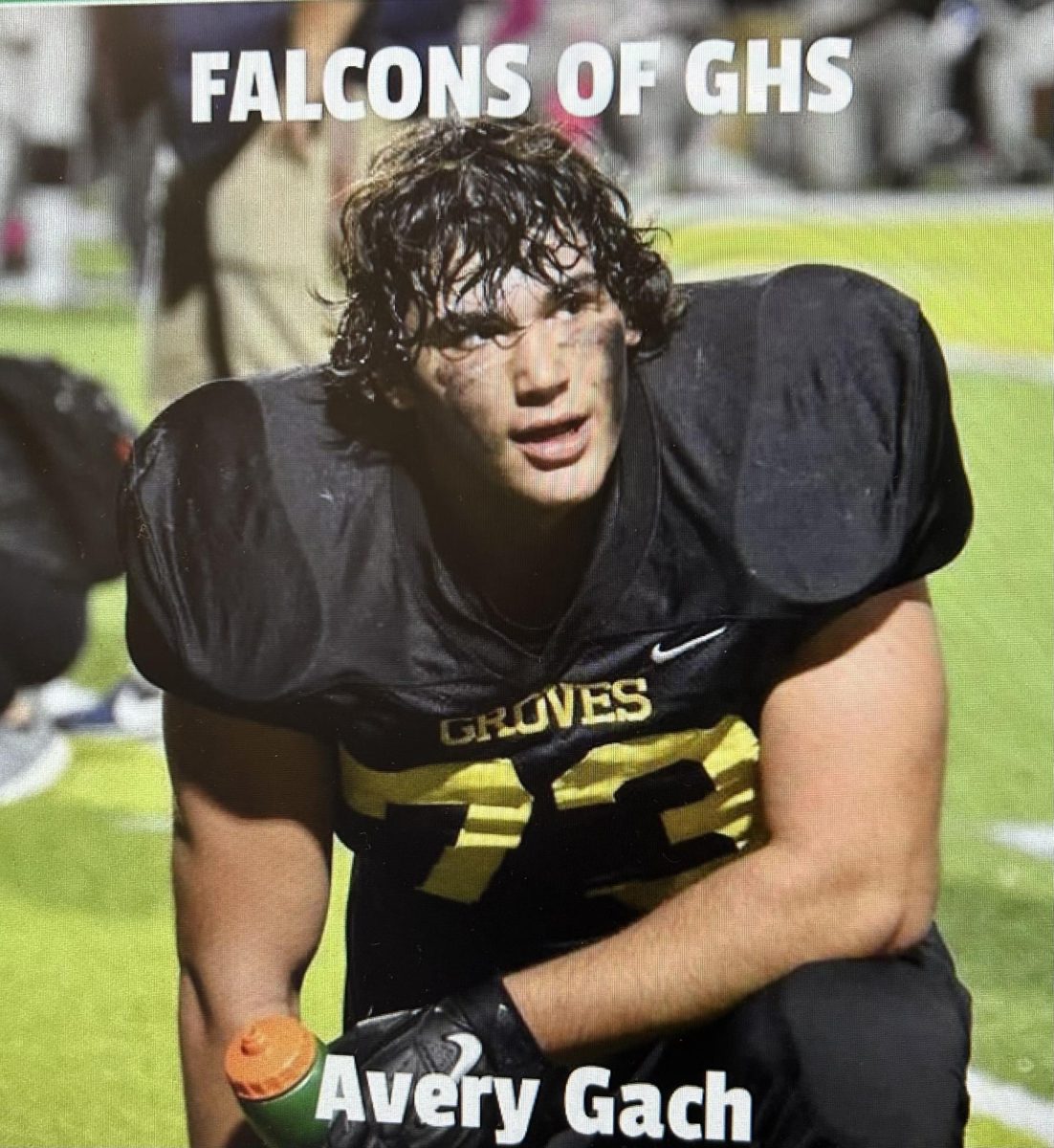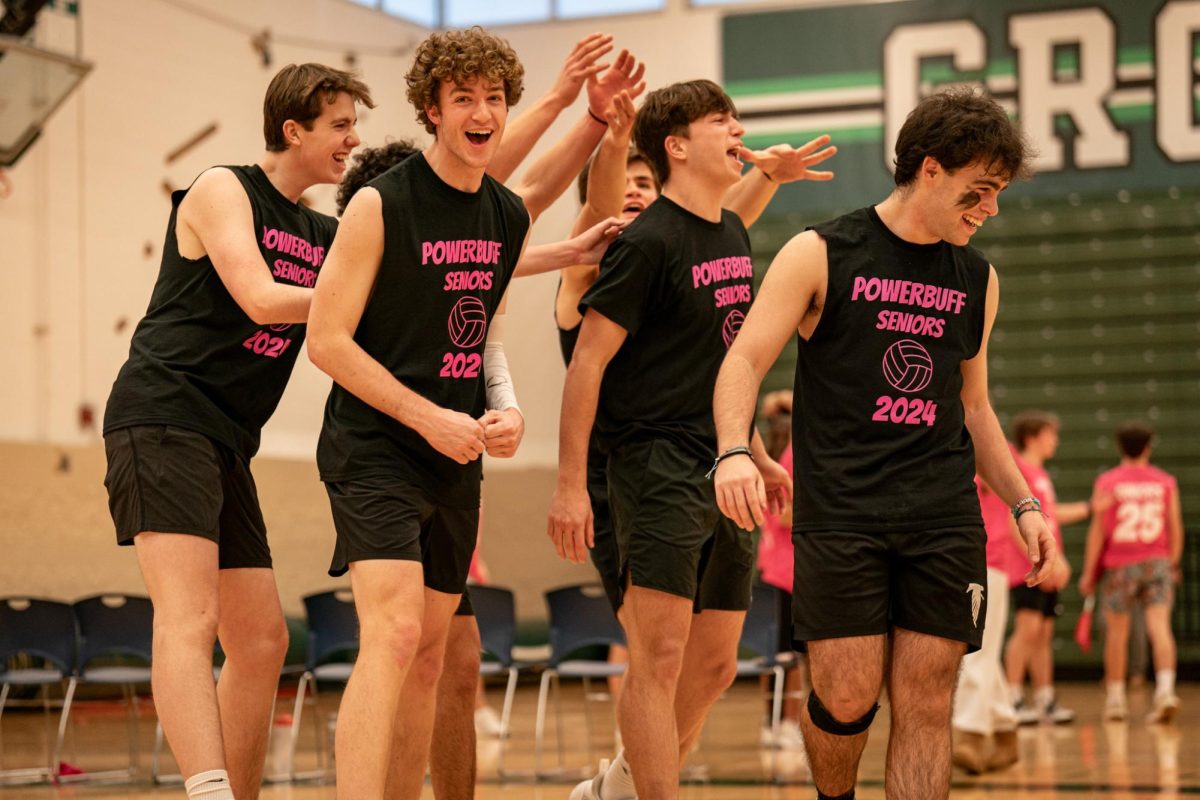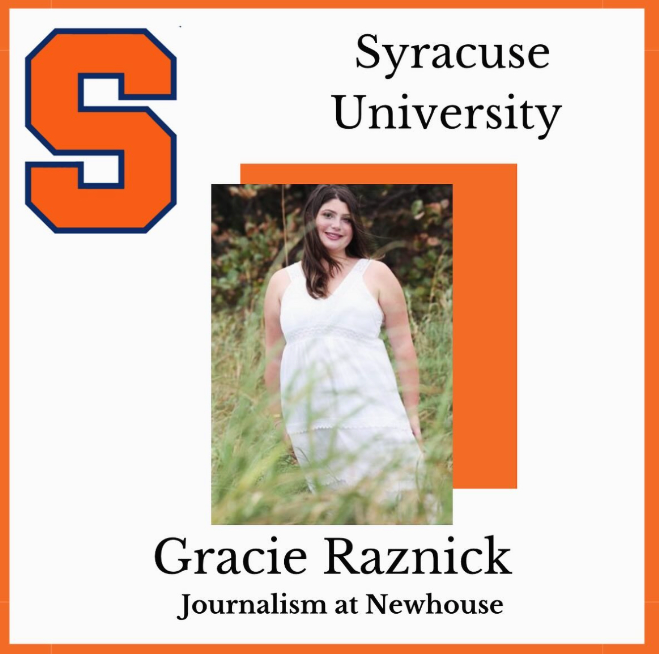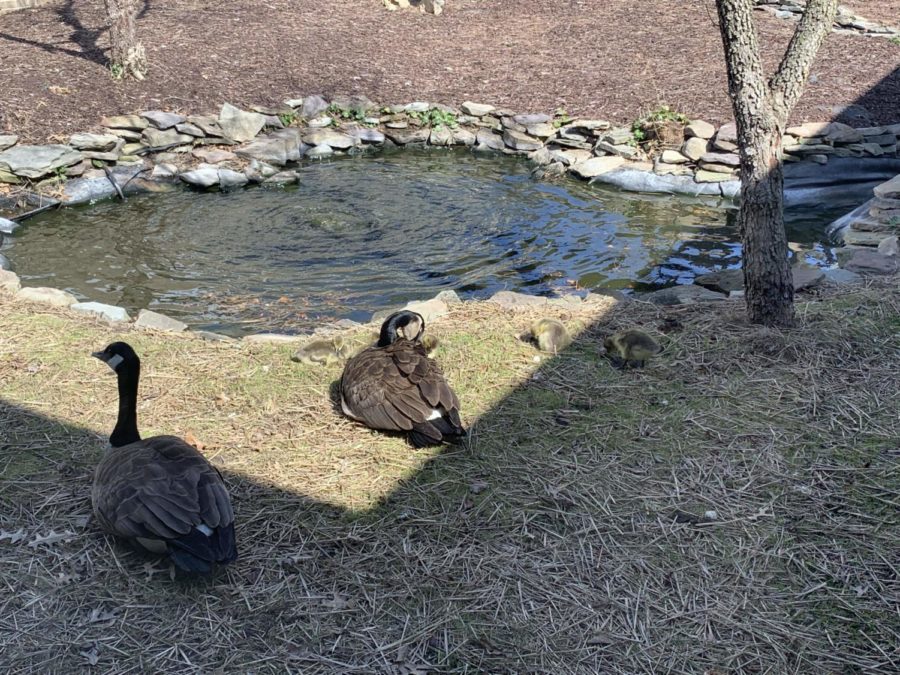First time in years, staff and DNR keep goslings alive in courtyards
The family of geese sunbathes by the pond on April 22.
June 3, 2022
 Eleven ducklings, six squirrels, five goslings, and a partridge in a pear tree.
Eleven ducklings, six squirrels, five goslings, and a partridge in a pear tree.
Okay, I take back the partridge, but everything else actually can be found in the B-wing courtyard. With our natural spaces bringing the gift of life to the Groves community, it feels like we’re a few golden rings away from having Christmas in April.
For over ten years, Groves has been a seasonal home to local wildlife. Teacher Jennifer Law has taught Spanish for twenty-three years. Most of which she has shared with our geese. She believes that Groves provides ideal conditions for mothers to start their families.
“What I understand is that a female goose looks for the perfect environment. She looks for someplace that has water. She looks for some place that has some kind of food source. And I think this community in general, is ideal for geese. We all have a lot of them around here and our yards. And I think that pond is a really big draw for her,” Law said.
The geese are not the only ones supported by the courtyards. Students receive multiple benefits from the green spaces spread throughout the building. Compared to many high schools with multiple levels, Groves has a special design: All of our classrooms are on a single floor. Without these spaces, only classrooms on the perimeter of the building would have windows. The courtyards provide a breath of fresh air in what would have been a dark and stuffy building.
Susan Smith made a point about restoring the courtyards when she first started as principal.
“The courtyards at Groves are a beautiful and unique aspect of our school. Natural light stimulates mindfulness and learning. It is very important to me that all areas of the school are spaces that are aesthetically pleasing. When I took the job here at Groves, I felt I needed to work with district facilities department members to improve the neglected courtyards. The work the team did is unbelievable,” Smith said.
Smith’s dedication to maintaining the outdoor spaces extended to helping the geese and ducks. Parent and Alumni Cindy Collon worked closely with Smith to look after the animals. Collon was amazed at the lengths Smith went to just to keep the birds safe.
“I can’t even begin to say how fortunate we are to have Dr. Smith because she would meet me at 6:30 in the morning and open up the courtyard so I could see them before the kids got to school. She was on board with whatever we needed to do, which included her meeting at 6:30 in the morning on a Saturday. She really went above and beyond. I don’t know many principals that would dedicate the time and the energy and have the compassion that she had for these little guys,” Collon said.
As principal, Smith is responsible for all aspects of life at Groves. She is heavily invested in the environment created for students and staff.
Law noticed a huge difference in the community after the courtyards were improved. They brought life to the halls in more ways than one.
“There is something about the peacefulness of just seeing nature. Every single time I pass by that courtyard, there is always somebody standing to watch the geese. Whether it’s a student, or the kids from the daycare, or a staff member, they always have a smile on their face. I think that that’s a really healthy thing for us,” Law said.
The perks, however, do not go both ways. More often than not, the baby geese don’t live to adulthood. Year after year, staff watched the goslings die. They were compelled to find out if the location had anything to do with it.
“Unfortunately, it hasn’t been that common for the geese to live this long. For a stretch of years in a row, they only survived the first couple of weeks of their lives,” Law said. “After the first year, when the geese died two years in a row, a group of us decided that we wanted to look into it a little deeper. So our first move was to get the soil tested.”
The science department took samples of the soil to study. Staff predicted that pollutants from the community had seeped into the ground of the courtyard. But, after a few tests, no harmful chemicals were found.
“Nothing identified in the soil was posing a problem. So, as sad as it was, we decided we could prevent them from using that courtyard. As much as we enjoy them, it would be selfish to lure them there. Because there’s something about that courtyard that we haven’t figured out that was causing problems with the little ones,” Law said. “We looked into lots of different options that were either very expensive, totally unrealistic for the space. Then, it was discovered that there are some pellets that can be put down that aren’t harmful to the geese. They just make that area unpleasant for them.”
Considering the Groves community’s love for the geese, this solution wasn’t ideal. While they put the pellets down for a few years, the staff continued to search for ways to keep the geese at Groves.
“We still wanted to understand what it was about the courtyard that was causing problems. They usually pick their nesting spot around February. So instead of putting pellets down every February, and not being able to enjoy them, our goal was to make the courtyard safe for them again, so they can continue to be part of our Groves family every spring,” Law said.
Invested in the geese, teachers even asked the Department of Natural Resources to perform autopsies after the birds passed.
“Somebody on our Groves staff had a connection at the DNR, the Department of Natural Resources. They heard us out and they said, unfortunately, the best way for us to help is to do an autopsy. Because an autopsy tells us a whole lot about what the problem was with the goose. The next year, the DNR followed through on their promise. They took one of the bodies from us so that they could give us some information. And the best that they determined is that the babies looked like they had been in a very high-stress environment,” Law said.
After reflecting on the autopsy results, the staff grew to understand how the courtyard could become a stressful environment. With constant lectures, bells, and hallway traffic, a high school is the last place for a family of geese to raise their children.
Collon witnessed life inside the courtyard firsthand when feeding the geese.
“There are a lot of kids that I witnessed that would bang on the glass or just were not kind when they walked by and that made me really sad,” Collon said.
Checking on the animals multiple times a day, Collon grew to understand the importance of finding a new habitat that better supported the geese and ducks.
“We we rescued a duck about 10 years ago. So I’m a tiny bit familiar with ducks, not necessarily geese. I did a ton of research. We have two wildlife specialists that we had gotten to know when we rescued our duck. I reached out to them in addition to the DNR, because ducks and geese are federally protected animals, because they’re migratory animals. So it’s actually a federal offense for you to dismantle or disrupt a goose or a duck’s nest. That made me more cautious. I felt like I needed to do like a ton of research before we got involved,” Collon said.
While she gathered more information on both ducks and geese, Collon made sure they stayed fed with proper meals. The geese got a blend of hard-boiled eggs, kale, cucumber, carrot, and mealworms. And the ducks received feed that Collon picked up at a farm store. The food provided valuable nutrients that the courtyard could not.
“The grass in there is just growing. It’s not nutritional grass. And although they have the water source, it’s not a nutritional water source,” Collon said. “That pond is lined with plastic. In a normal lake or a stream or river you have the algae and the seaweed. You have so many nutrients just from the bottom that are floating that they eat and rely on versus a plastic lined pond.”
The experts explained how a lack of nutrients paired with proximity to humans could cause issues for animals looking to raise their families in our courtyards.
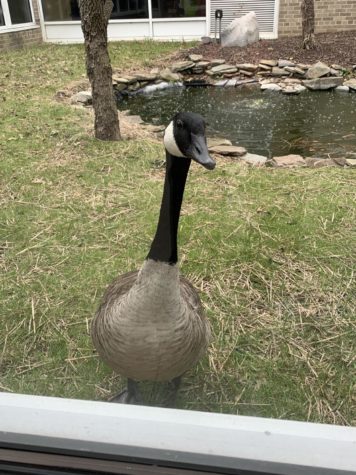
“Their little feet don’t web properly if they don’t have the right nutrients, and their bills don’t grow properly. I would imagine the parents were probably stressed that they didn’t have what they needed for their babies,” Collon said.
To the public, the courtyards seem like the perfect environment, but many problems go unseen. Now, the community has to decide if it is worth it to implement changes that will keep the animals safe or if we should set them free.
Law, and many others, believe Groves should work to keep the animals on campus. She offered the main courtyard across from the attendance office as a possible solution.
“There was a year that we had our geese pick that spot as a nesting spot. And that meant that students couldn’t enjoy that courtyard during lunchtime. So, there was a trade-off there. That whole space became the animal’s space for the season. But at the same time, there are lots of places where the mom could move the babies away from the windows and traffic. There’s a huge hedge in there, some bushes that they’d often hide under. And to me, that was a good sign that they were able to do that,” Law said. “Most babies did make it all the way to growing their wings and flying off. So, I think a happy medium might be discouraging the small, high traffic courtyards so that they choose in a space like that.”
The large courtyard would resolve the spacing issue, however, it does not offer a water source. Law admits that she had to build a small pool for the geese while they spent their time in the bigger space.
“I took it upon myself to grab a pool and a ramp. I teamed up with the wonderful custodians who were willing to keep it full for us and clean up the mess that the geese love to make. It was a really big commitment on the part of the custodial staff as well. Not to mention they’ve got to go cut the grass out there. But, because there was so much space out there, the geese could hide somewhere when the custodians were cutting the grass or hosing down the patio. And then the pool was placed where people could often see the geese at a safe distance and enjoy the babies swimming and getting their drinks,” Law said.
Law is thankful for the support of the maintenance staff. While caring for baby geese probably wasn’t in their job description, they took on the task without question.
Collon was pleased to see that this attitude extended to staff throughout the building. Many people were helpful and accommodating when she needed access to the courtyards.
“If Dr. Smith wasn’t available, Mr. Wilcox and Ms. Gullo would walk me down and let me in. They would chat and be patient and, and the custodian, Carmen, was wonderful also. It was neat to see everybody come together for these little guys. A lot of people cared for them,” Collon said.
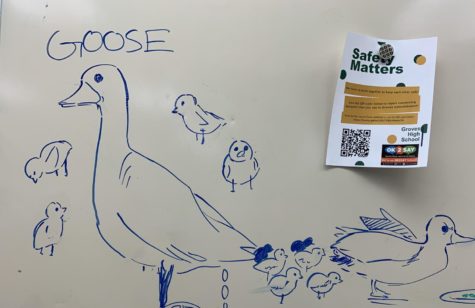
One of the largest acts of support for the birds would be the efforts to safely move them off of school grounds. Meeting at 6:30 on a Saturday morning, a team of about twelve volunteers spent two hours walking the geese to a nearby nature preserve.
“I consulted with a lot of different people, and ultimately decided that it would be best to try to slowly get them out of the school down the hallway. But if we took them the shortest route, it would put them on 13 mile, which is setting them up to fail. Then when we took them out the back of the school. We walked the perimeter of the school, but everything is fenced in. And so that created another problem in addition to how busy the fields are after school and on the weekends with the parking lot there. It was so stressful because so much could go wrong. And you have to be so careful because if the geese get upset or try to fly in the school, then they risk injury. They could fly away and leave their babies. There was so much that could have gone wrong. I was a nervous wreck,” Collon said.
It was a tedious process for both the volunteers and the geese. They took multiple breaks to give the babies rest during the taxing journey.
“We formed a little horseshoe behind them and slowly walked them to a nature preserve down off of evergreen road. After we measured it, the rehab people didn’t think the babies would make it that far. It was too long of a walk. They told us to just get them as close to off the property as possible. So we just kept slowly, slowly walking them It took quite a while. We just kept watching them and we gave them breaks,” Collon said.
In the end, the work paid off. Once the geese recognized the nature preserve as a safe alternative to the courtyard, they ran to their new home.
Video by Eve Collon
Senior Eve Collon shares the journey of the geese as they travel to their new home on April 29.
“As soon as they started getting close to the hill, their speed picked up and those little guys ran down that hill and plopped in the water. It was the best thing ever. It was such a happy ending,” Collon said.
While the mission was a success, Collon work was far from done. A few days after removing the family of seven geese, Collon was alerted to the fact that a new family of ducklings now roamed the courtyard.
“I was so relieved that everything went great on Saturday. And then on Monday morning, my daughter texted me. She says, ‘I am not quite sure how to tell you this’. Then she sends the dot dot dot. And I’m like, ‘What Did you get a bad grade? What happened?’ She’s like, ‘there are 11 Baby ducks’. And I’m like, ‘you’ve got to be kidding me’,” Collon said.
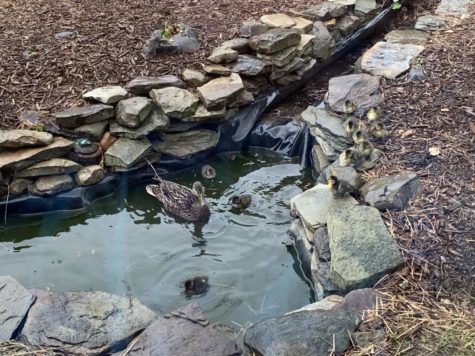
Collon was less concerned about moving the ducklings. There was only one adult duck, which meant there would be less resistance. However, the ducklings were much younger than the geese and they needed an immediate evacuation.
“The wildlife specialist said we need to get them out as soon as possible. I wanted to wait for them to get a little bit bigger, so we could walk them to the nature center. And she really said that it’s really best for them to move them sooner than later. So I felt kind of panicked. We fed them for a couple of days and then set up a different plan for the ducks. They were so little, there’s no way they could have made it to the nature center,” Collon said.
For the ducks, Collon resorted to a more intimate approach. Working with her daughter and husband, Collon moved the ducklings into transport boxes. Then she drove to the same nature preserve to release the family by the water.
Collon believes the team could repeat the removal of the birds in years to come, but it is a risk that she wouldn’t want to take.
“I don’t anticipate it being easy to get them not to come back. I feel confident with the removal plan that we did both times. They both worked really well. We had perfect circumstances. If it happens in the future, we can absolutely have success. But I think it would probably be in the best interest of the birds for them not to nest there in the first place,” Collon said.
Despite the overwhelming support for these animals, Collon and other experts still believe that it would be best to keep the animals out of the courtyards. Caring for the geese and ducks requires a lot of time and money.
“It’s a beautiful courtyard because Dr. Smith had it all cleaned up, but it kind of created the problem where everybody wants to have their babies here. Everybody’s saved, but the next step is trying to get in front of the district and get support because it’s probably going to happen next year. And it’s expensive because we were feeding them, so you’ll have that expense. And then we had duck starter food that you buy at a farm store. Also we need to put up like owls and hawks that kind of move. So not just like a statue on the roof. We need something a little more substantial. So, we want the district that help out with that. That’s my next fight,” Collon said.
Smith plans to work with Collon and other people who are educated on the subject to protect our birds.
“In the future, we will continue to work with the Department of Natural Resources and local wildlife experts to make sure that all ducks and geese are in their safest natural habitat,” Smith said.
As the administration works to reach a solution, Groves is excited and honored to host the local wildlife through their transitional periods.
“I think it’s a win-win situation if we can make sure we’re doing everything to create a space that the geese can enjoy and thrive in. They bring us little moments of looking at those cute little fluffy guys,” Law said. “Everything’s all right in my life for a minute. I don’t have to worry about that test I’m about to take or the test that I just took, or all the papers I have to grade. I really do think it grants everyone a moment of peace.”






